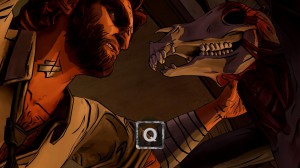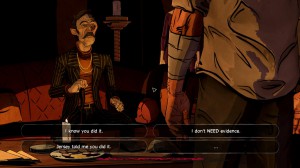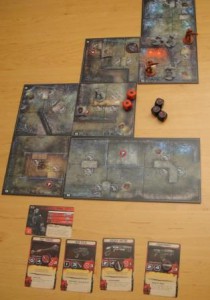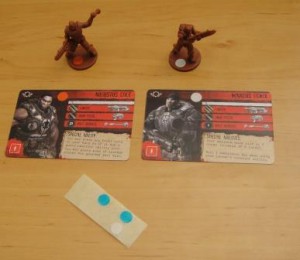In the Telltale game “The wolf Among Us” you play Sheriff Bigby Wolf, aka B. Wolf aka the Big Bad Wolf from the fairy tale. All fables from the fairy tales now live in a rundown quarter of New York City.
I recently bought the game for half price in a steam sale and I was not disappointed.
The game (like the well-known walking dead game from the same company) is more an interactive movie than an actual game. Most of the time, the story flows automatically. There are some minor puzzles like click on this, click on that, use item etc. There is no hard puzzle, where you have to think a lot, though. In some cases you may select a prepared answer or you may remain silent by not selecting an option before the allotted time runs out.
In some danger situations a quick time event pops up. If you fail to react, you may die at that moment and have to restart a few seconds earlier. There are three types of quick time events.
Q – here you have to press the Q key repeatedly. Usually this is a feat of strength
ASWD – here you have to press and hold one of the movement keys, usually to evade an attack
aim – here you have to click with the mouse cursor on or near a red circle
The game is published in five episodes, like a TV series. Since it’s already been released for some time all episodes are immediately available for download (automatically installed if you use steam). When it was newly released you had to wait with future episodes until their release date (one per week or such). An episode takes maybe 45 to 90 minutes to play through. I recommend playing through an episode in one go and not interrupting. Since the game saves automatically you never know for sure if you have to repeat a dialogue or something when you quit the game before the end of episode. Also the dramatic works better if you handle it like you would a TV series. At the end of an episode there is usually a cliffhanger. You also get a glimpse on what lies ahead in the next episode. At the beginning of the episode you get a quick recap on what happened previously (again like in a TV series).
At the end of each episode you also get a list of five crucial decisions during that episode and how you reacted as opposed to the majority of players. Something like: you and 5% of the players chose to give the pig Whisky. Some of those decisions will have an influence on details in future episodes. Overall there are apparently no dramatic changes to the story based on the decisions you take. I can however not confirm that from my own playing experience, because I played it just once. Since it is a story driven game I don’t see why I should play it twice anyway.
What I would have liked
Commercial breaks (just kidding).
I would have liked it if there had been some real puzzles in the game. It would also have been nice if the dialogs would have led to critical endings (like if you chose the wrong words you get shot or something).
Conclusions
If you haven’t got the game already, you are probably not the biggest fan, but if the above description sounds somewhat interesting, I recommend putting the game on your steam wish list. You will get an email next time it is on sale. I found it as entertaining as a good (but short) TV series and that’s what you can see in this type of game.



